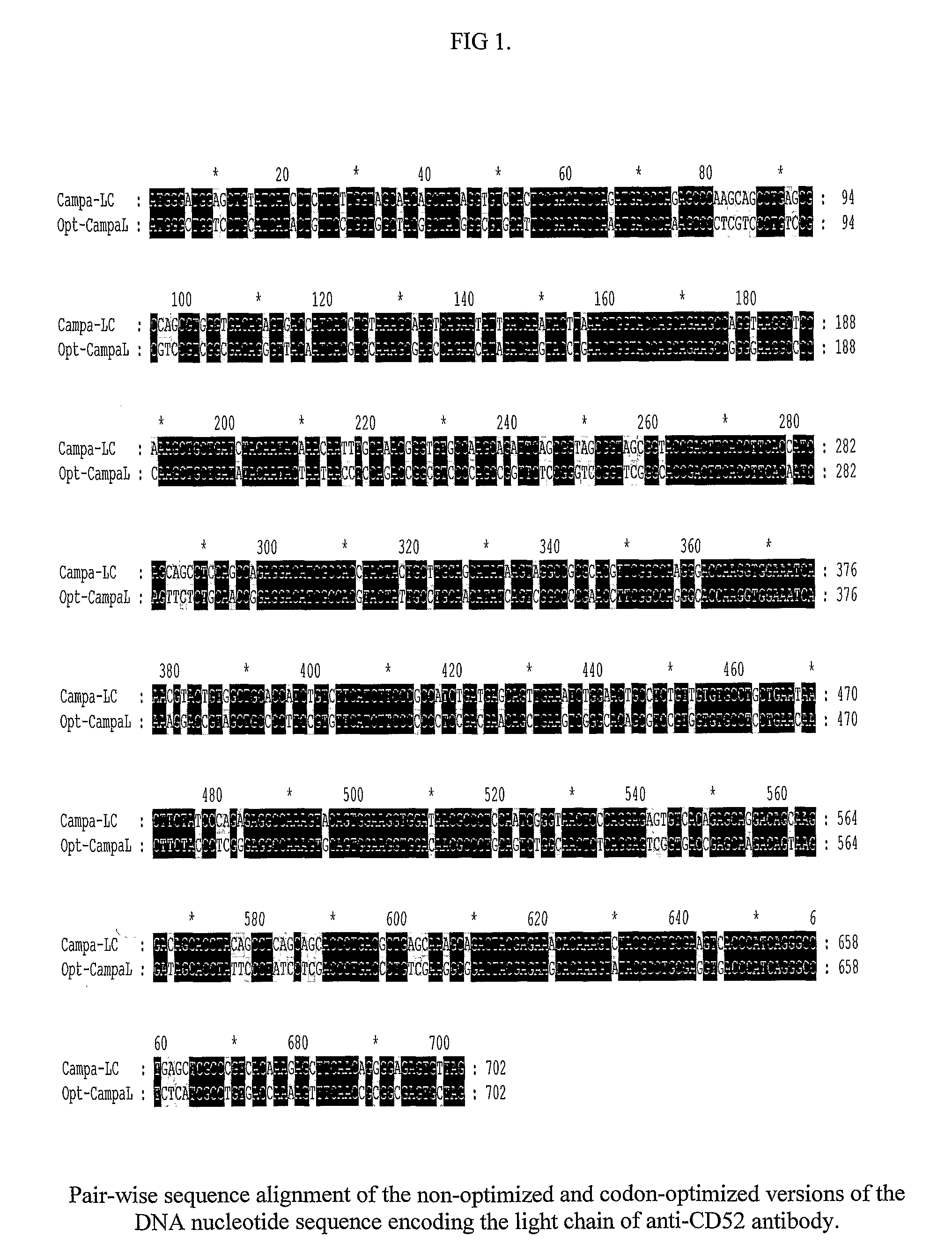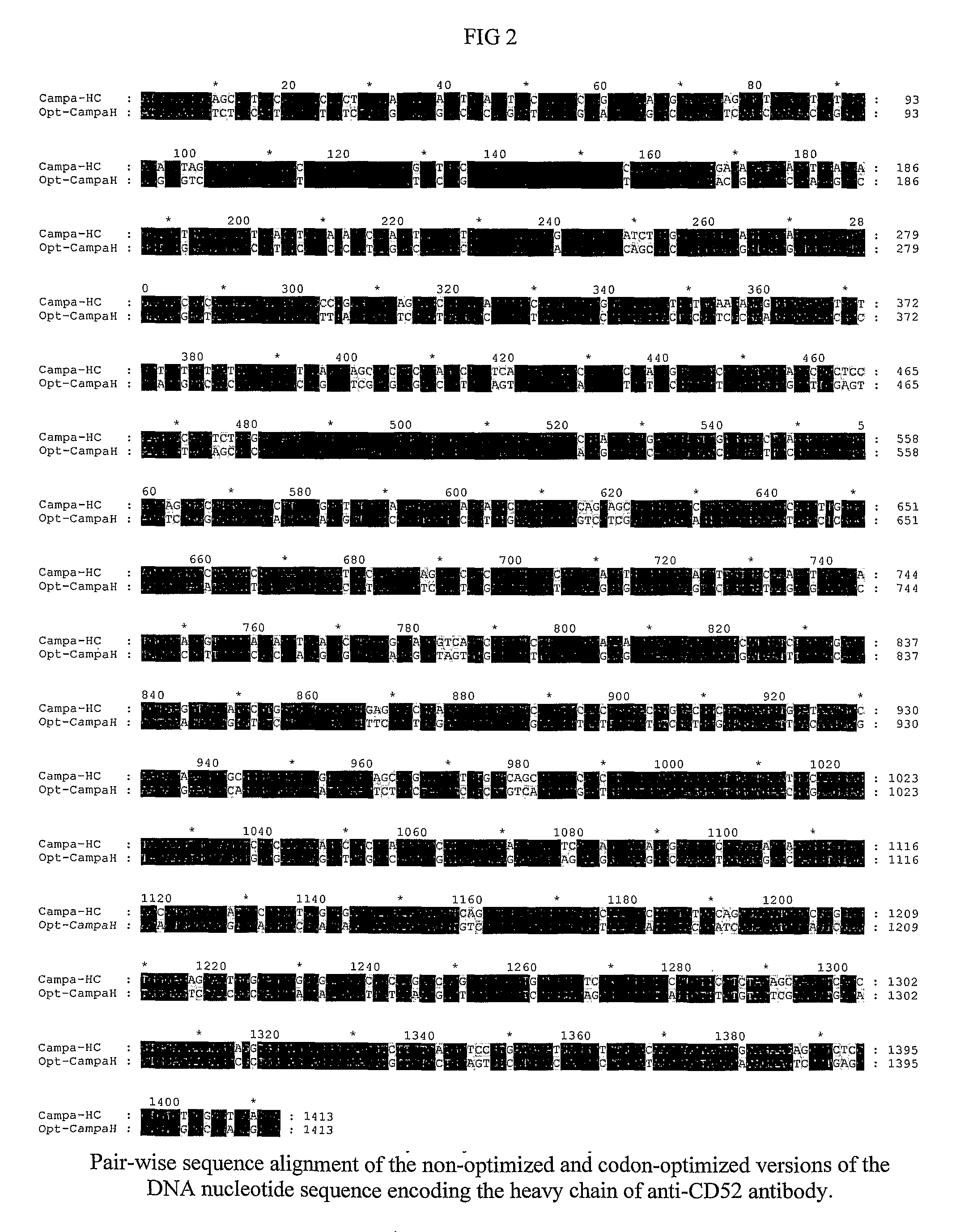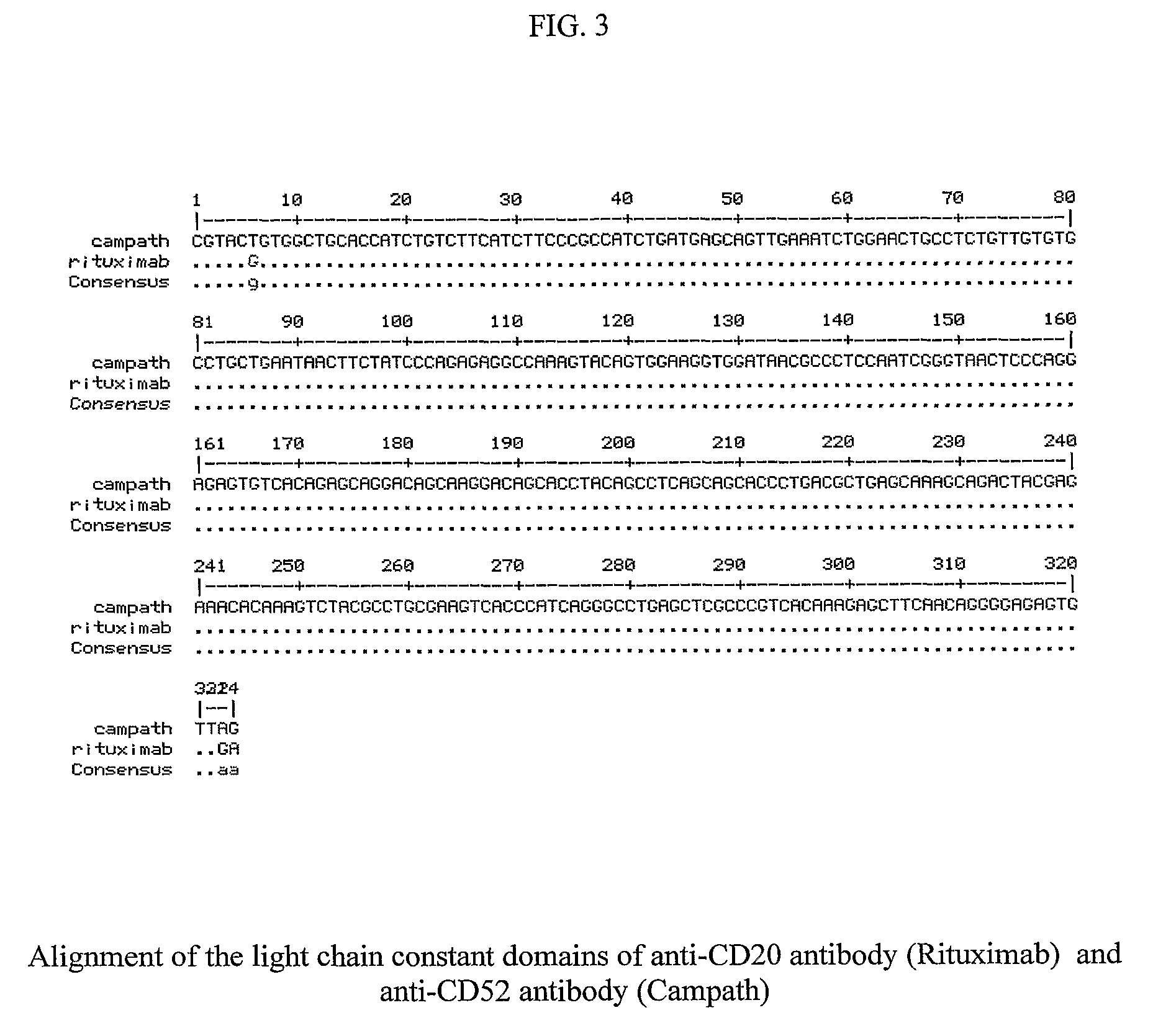Recombinant method for the production of a monoclonal antibody to CD52 for the treatment of chronic lymphocytic leukemia
a monoclonal antibody and production method technology, applied in the direction of antibody medical ingredients, drug compositions, peptides, etc., can solve the problems of allergic or immune complex hypersensitivity, limited clinical use of monoclonal antibodies, and inability to develop useful monoclonal antibodies in clinical settings
- Summary
- Abstract
- Description
- Claims
- Application Information
AI Technical Summary
Benefits of technology
Problems solved by technology
Method used
Image
Examples
example 1
De Novo Synthesis of the cDNA of Anti-CD52 Antibody would Include the Following Components
[0035]A Kozak consensus sequence (GCCACC) 3 followed by an initiation codon (ATG)[0036]Three “protecting” nucleotides at the 5′ and 3′ end of the cDNA[0037]Suitable restriction sites at the 5′ and 3′ end of the cDNA to clone into the expression vector.
[0038]Nucleotide sequence encoding the light chain of anti-CD52 antibody has been represented in SEQ ID 1.
[0039]Nucleotide sequence encoding the heavy chain of anti-CD52 antibody has been depicted in SEQ ID 2.
[0040]The codons in the coding DNA sequence of the heavy chain of anti-CD52 antibody that have been altered as part of the codon-optimization process to ensure optimal recombinant protein expression in mammalian cell lines such as CHO K1 and HEK 293 The respective codon optimized sequences have been represented in SEQ ID 4 and 5.
example 2
Choice of the Expression System
[0041]The design of the mammalian expression vector for the expression of recombinant anti-CD52 antibody can be based on one of the commercially available vectors (eg: pcDNA or pIRES from Invitrogen or BD Biosciences respectively), modified to include the following features:[0042]multiple cloning site for insertion of the cDNA encoding the light chain and heavy chain of anti-CD52 antibody along with the natural signal peptide. The light chain and heavy chain of anti-CD52 antibody will be cloned into two separate plasmid DNA vector with different selection marker.[0043]The design of the vector can also accommodate an independent (bi-cistronic) IRES-mediated co-expression of the selection marker for both the light chain and the heavy chain.[0044]The design of the expression vector can also accommodate an independent (bi-cistronic) IRES-mediated co-expression of both the light chain and heavy chain of anti-CD52 antibody along with the natural signal pepti...
example 3
De Novo Synthesis of the Variable Domains of Anti-CD52 Antibody
[0045]The light and heavy chain variable domains of anti-CD52 antibody were given for de novo synthesis to Epoch labs, USA. The anti-CD52 antibody chains were not synthesized with the constant domains; instead the kappa and IgG1 constant domains were excised from the anti-CD20 antibody chains and ligated with the variable domains of anti-CD52 antibody to generate full-length antibody chains.
[0046]The constant domains of the anti-CD52 antibody and anti-CD20 antibody are very similar. While the kappa constant domain of anti-CD52 antibody is 100% homologous to anti-CD20 antibody, the heavy chain constant domain differs by 2 nucleotides. The two-nucleotide change leads to a valine to alanine change at position 240.
PUM
| Property | Measurement | Unit |
|---|---|---|
| Temperature | aaaaa | aaaaa |
| Temperature | aaaaa | aaaaa |
| Volume | aaaaa | aaaaa |
Abstract
Description
Claims
Application Information
 Login to View More
Login to View More - R&D
- Intellectual Property
- Life Sciences
- Materials
- Tech Scout
- Unparalleled Data Quality
- Higher Quality Content
- 60% Fewer Hallucinations
Browse by: Latest US Patents, China's latest patents, Technical Efficacy Thesaurus, Application Domain, Technology Topic, Popular Technical Reports.
© 2025 PatSnap. All rights reserved.Legal|Privacy policy|Modern Slavery Act Transparency Statement|Sitemap|About US| Contact US: help@patsnap.com



